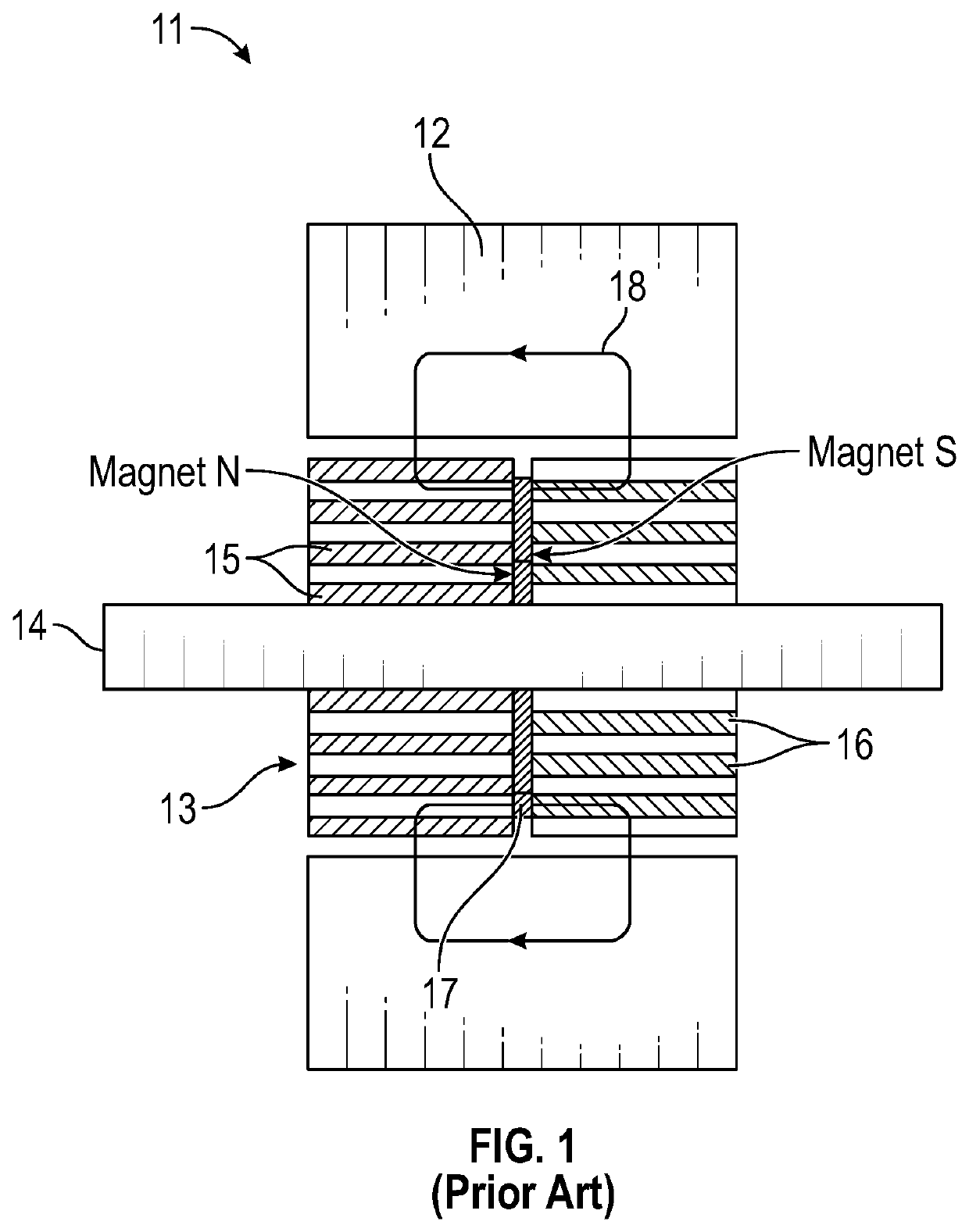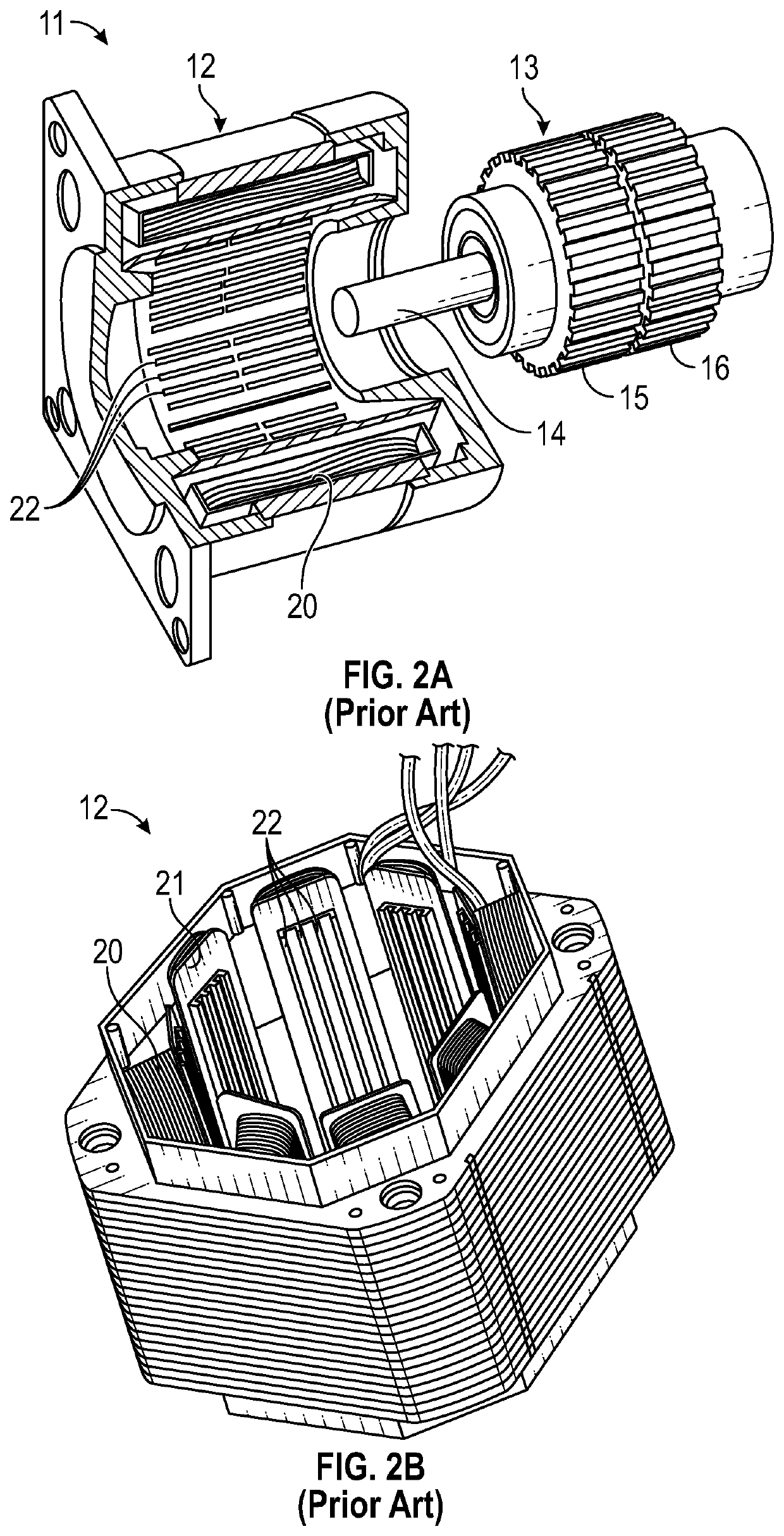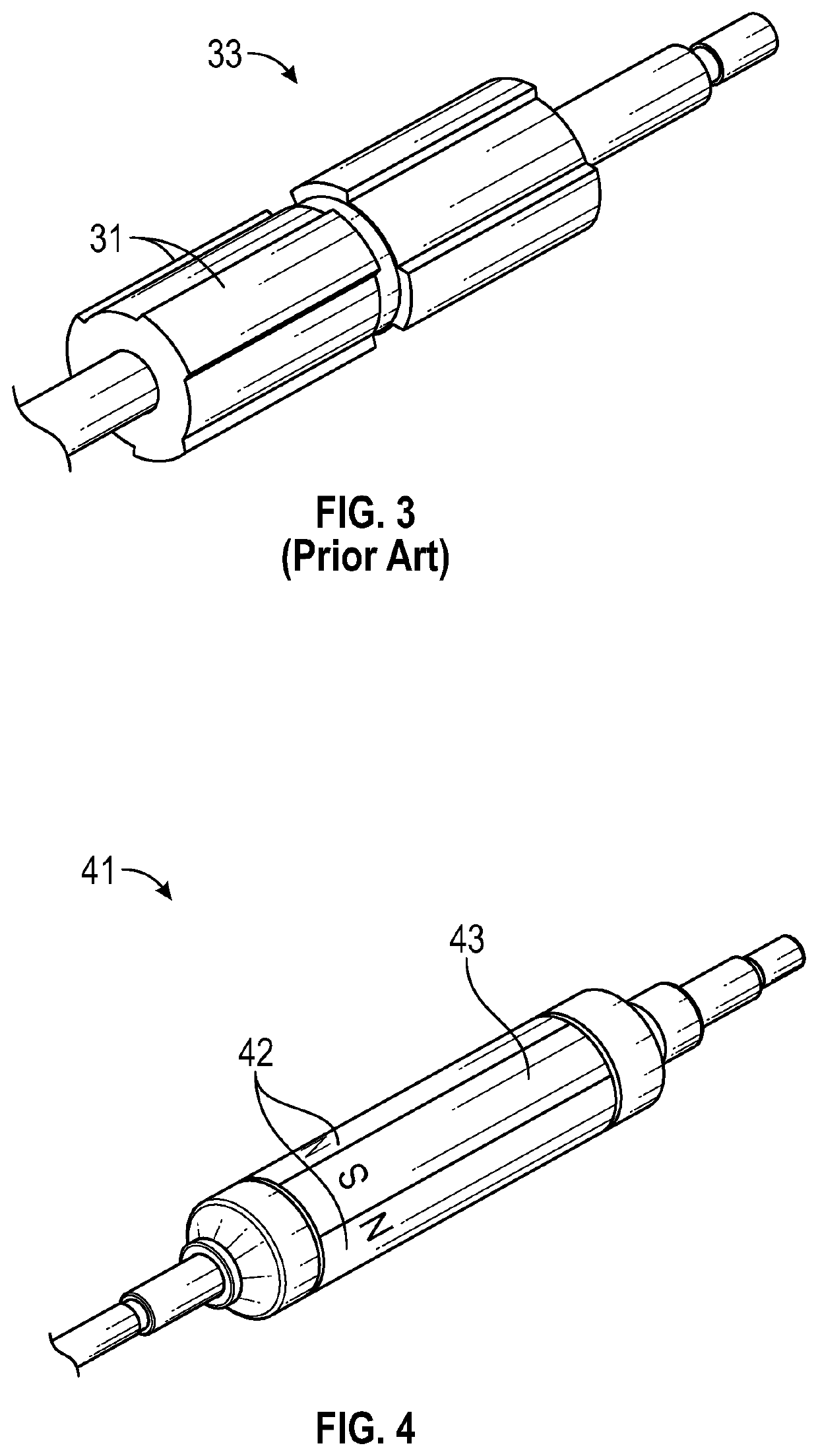Miniature step motor with shoeless stator and prewound bobbins
a stator and stepper technology, applied in the direction of synchronous motors, dynamo-electric machines, electrical apparatus, etc., can solve the problems of extreme difficulty in both rotor and stator design of 8 mm diameter steppers, extreme difficulty in manufacturability and performance, etc., to achieve short flux path, small reluctance, and small winding inductance
- Summary
- Abstract
- Description
- Claims
- Application Information
AI Technical Summary
Benefits of technology
Problems solved by technology
Method used
Image
Examples
Embodiment Construction
[0023]With reference to FIGS. 1, 2A and 2B, a conventional hybrid step motor 11 of the prior art is shown by way of comparison. This step motor includes a stator assembly 12 and a hybrid-type rotor 13. The rotor 13 is mounted on an axial shaft 14 that is supported for rotation within the stator assembly 12, e.g. via a pair of precision bearings.
[0024]The hybrid-type rotor has two parts with respective rotor teeth 15 and 16 that sandwich a disc magnet 17. The teeth 15 in one of the rotor parts are circumferentially offset by one-half pitch relative to the teeth 16 in the other of the rotor parts, so that teeth 15 define magnetic N rotor poles and teeth 16 define magnetic S rotor poles. Another hybrid-type rotor with fewer rotor teeth 31 is shown in FIG. 3. This kind of hybrid rotor arrangement provides for a long three-dimensional magnetic flux path 18 through the motor 11, resulting in greater reluctance and winding induction, and slower current rise time between successive phases t...
PUM
 Login to View More
Login to View More Abstract
Description
Claims
Application Information
 Login to View More
Login to View More - R&D Engineer
- R&D Manager
- IP Professional
- Industry Leading Data Capabilities
- Powerful AI technology
- Patent DNA Extraction
Browse by: Latest US Patents, China's latest patents, Technical Efficacy Thesaurus, Application Domain, Technology Topic, Popular Technical Reports.
© 2024 PatSnap. All rights reserved.Legal|Privacy policy|Modern Slavery Act Transparency Statement|Sitemap|About US| Contact US: help@patsnap.com










